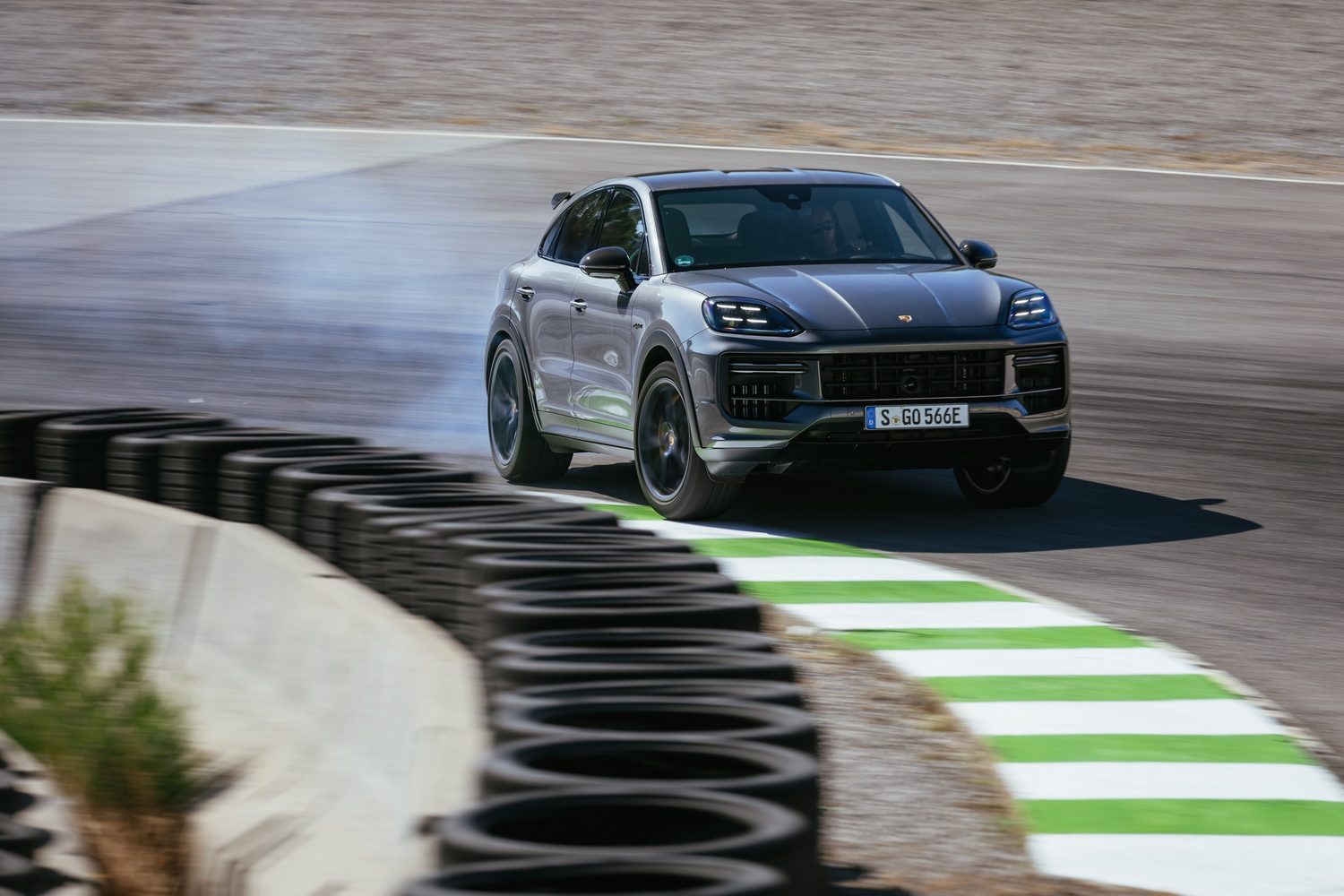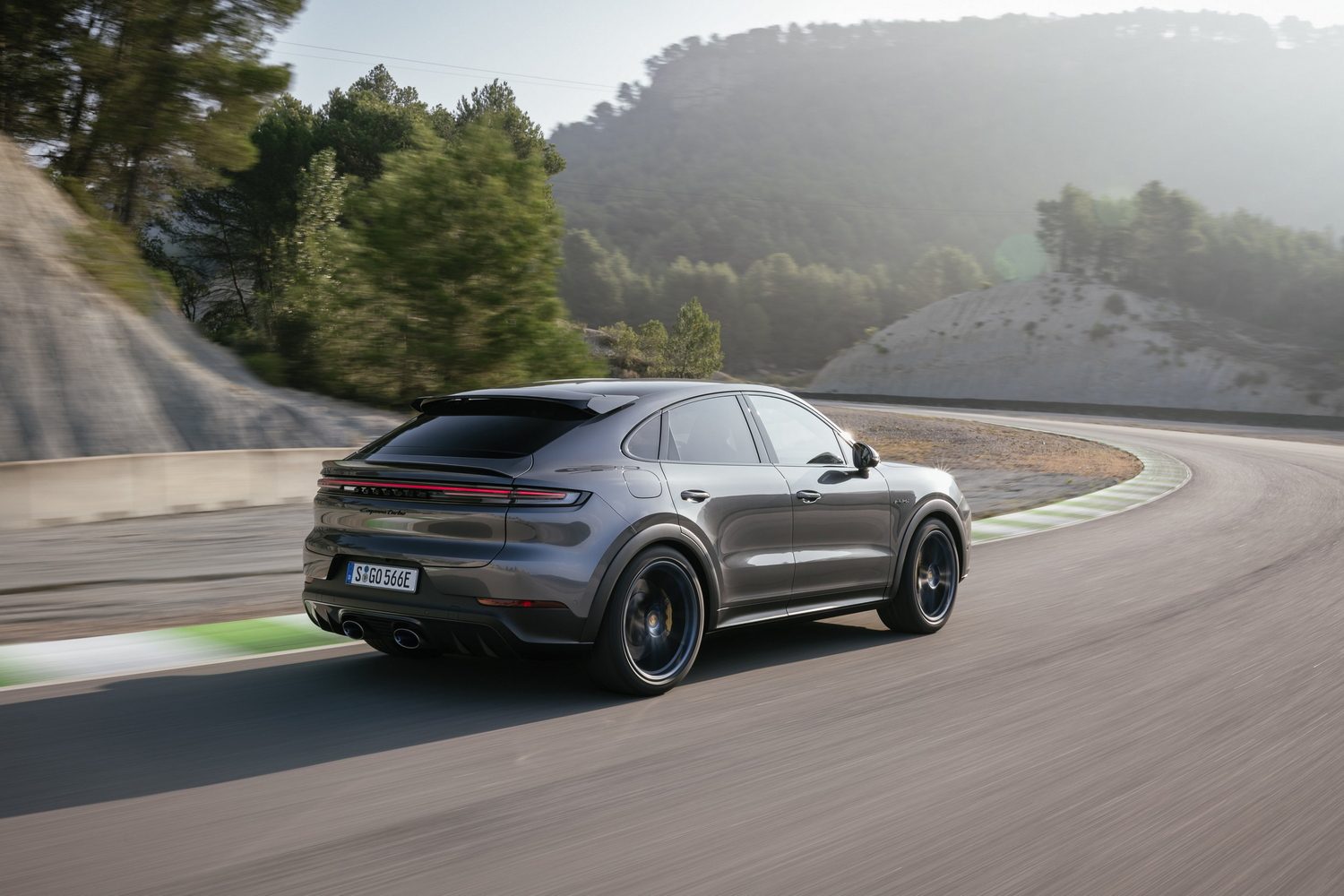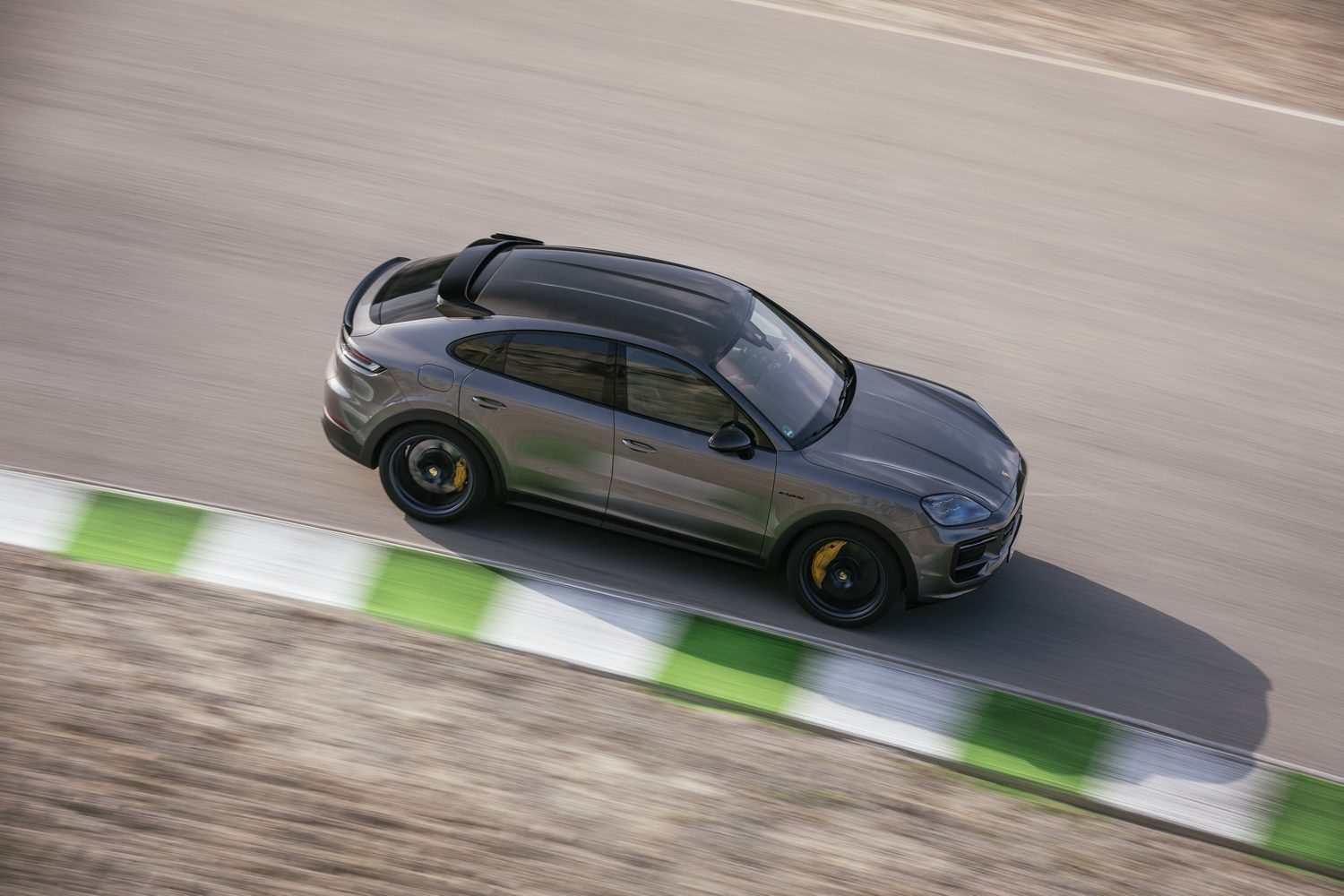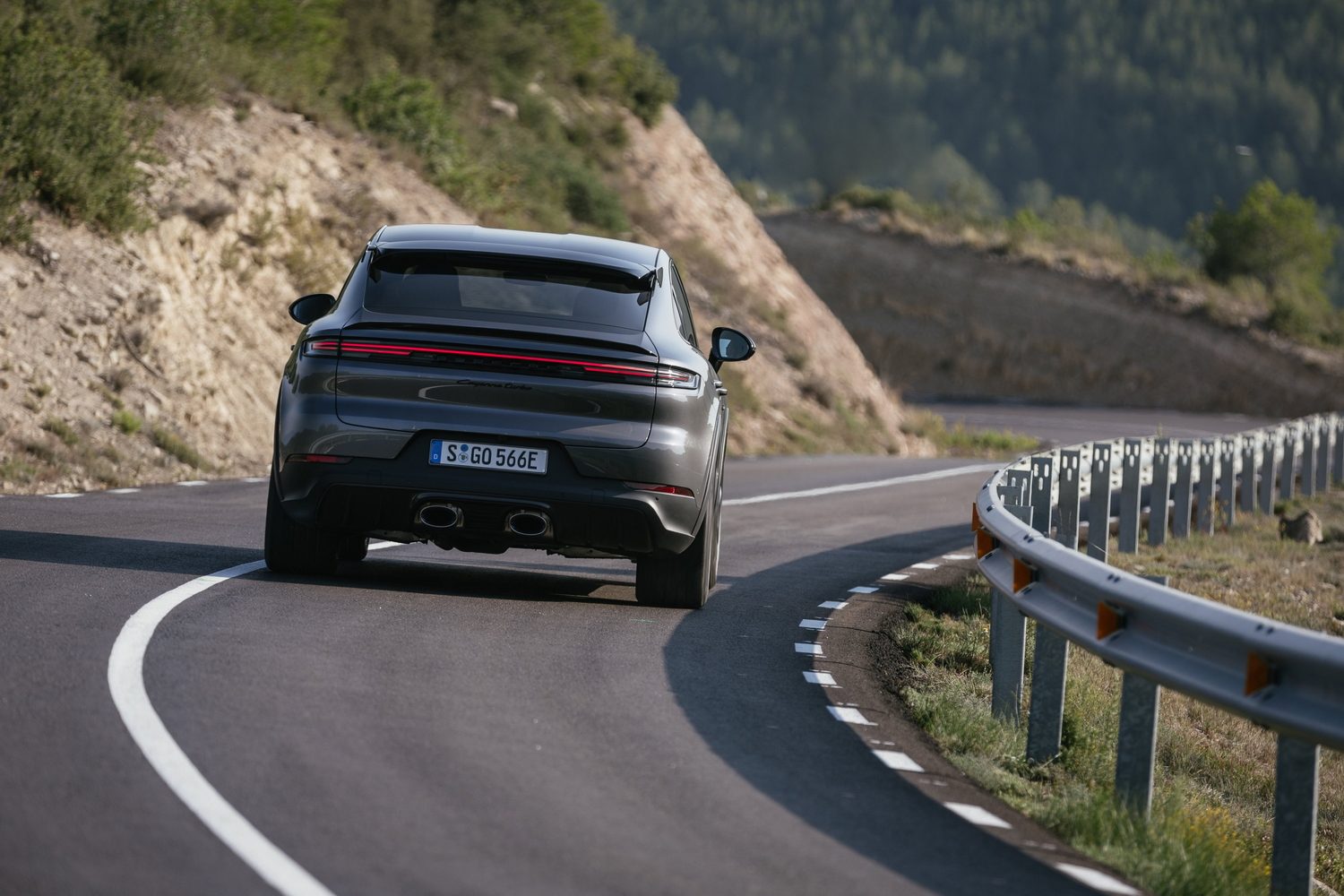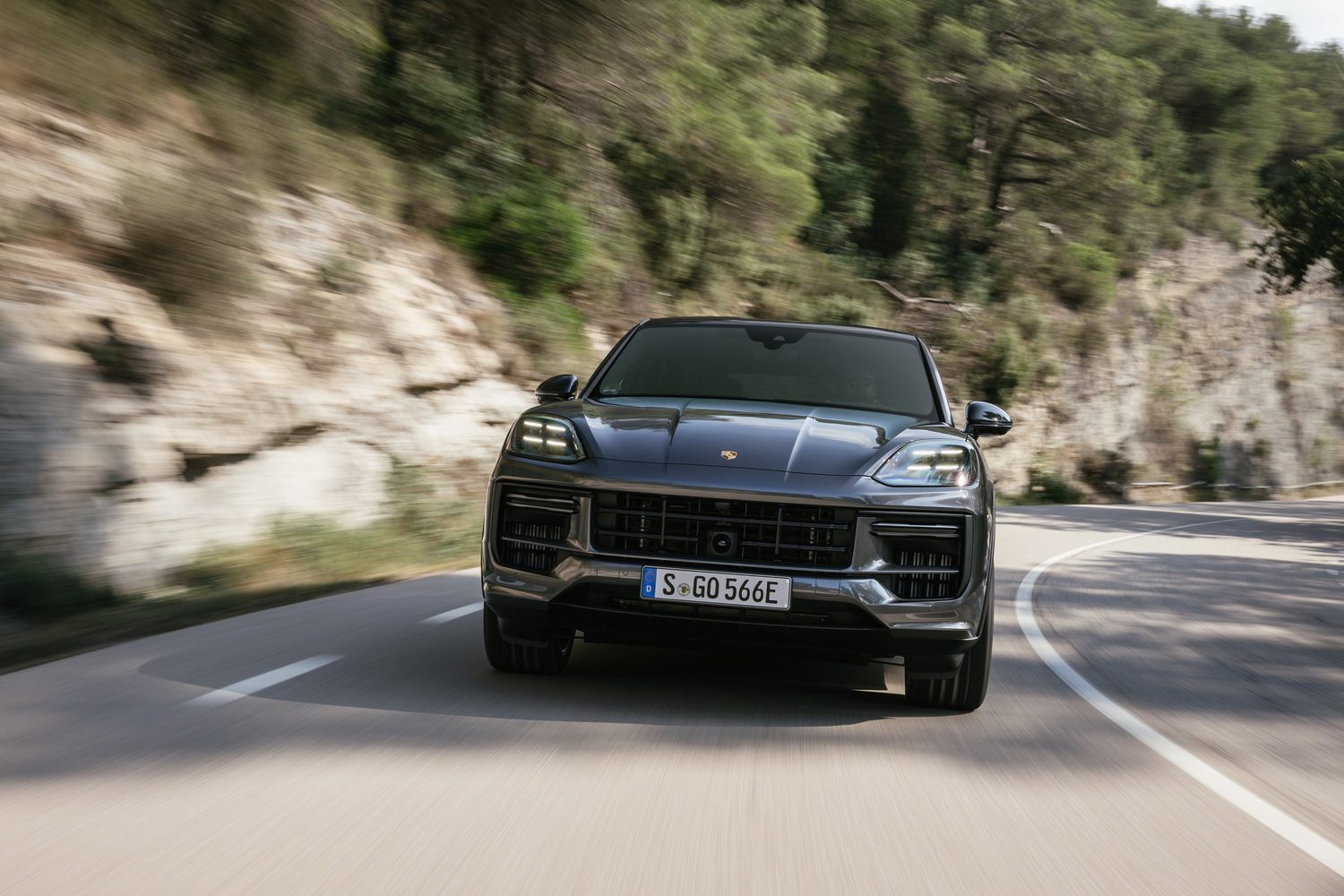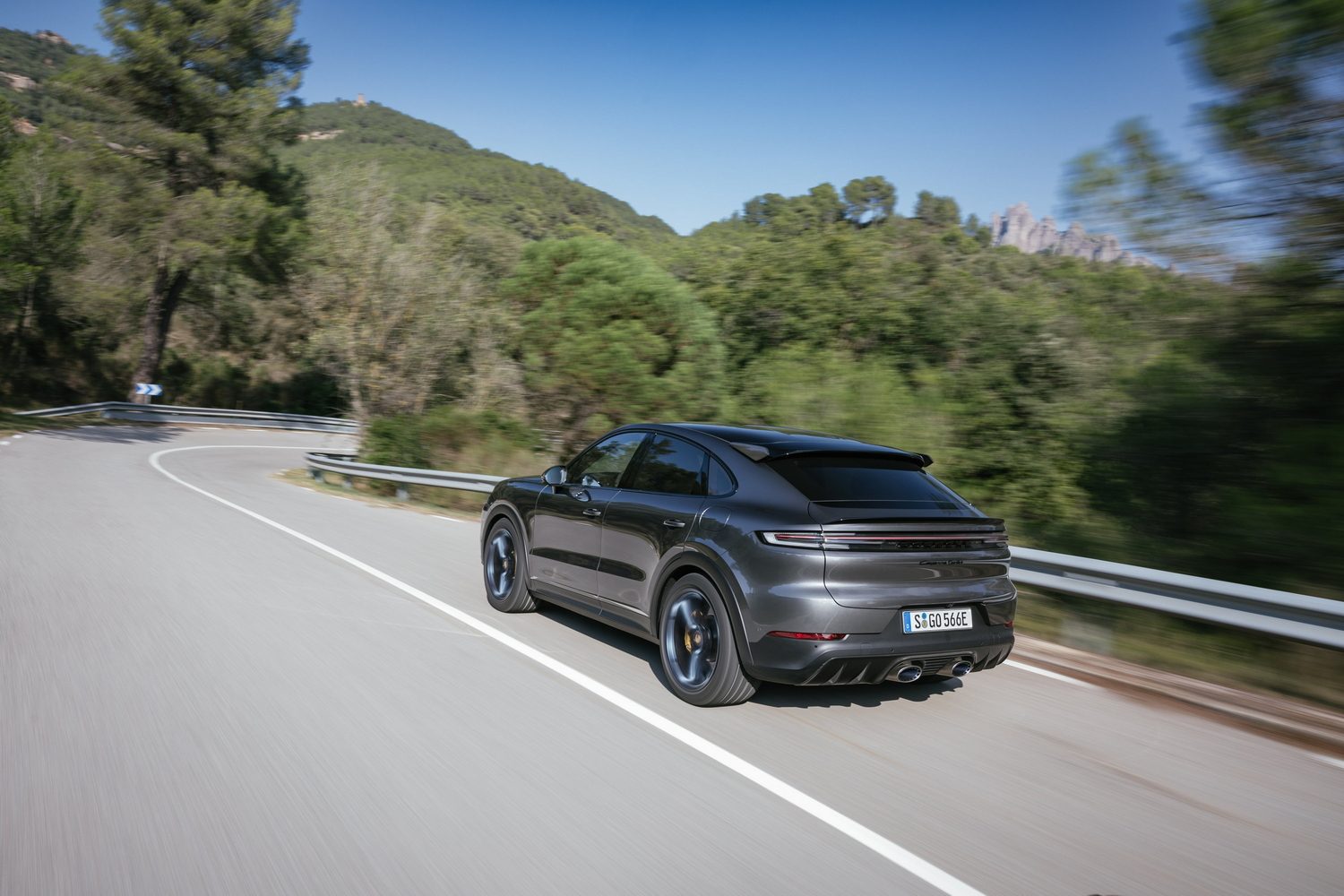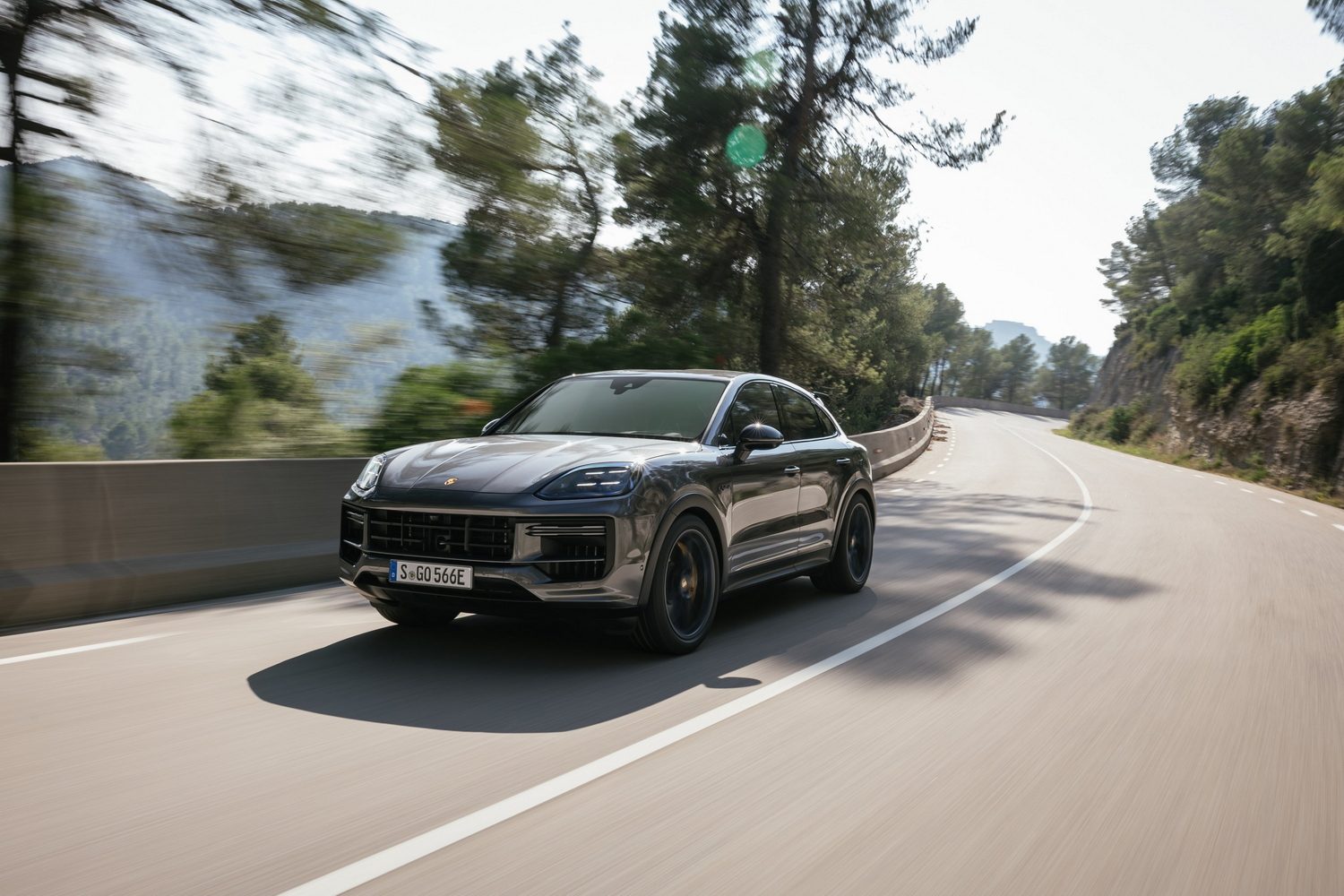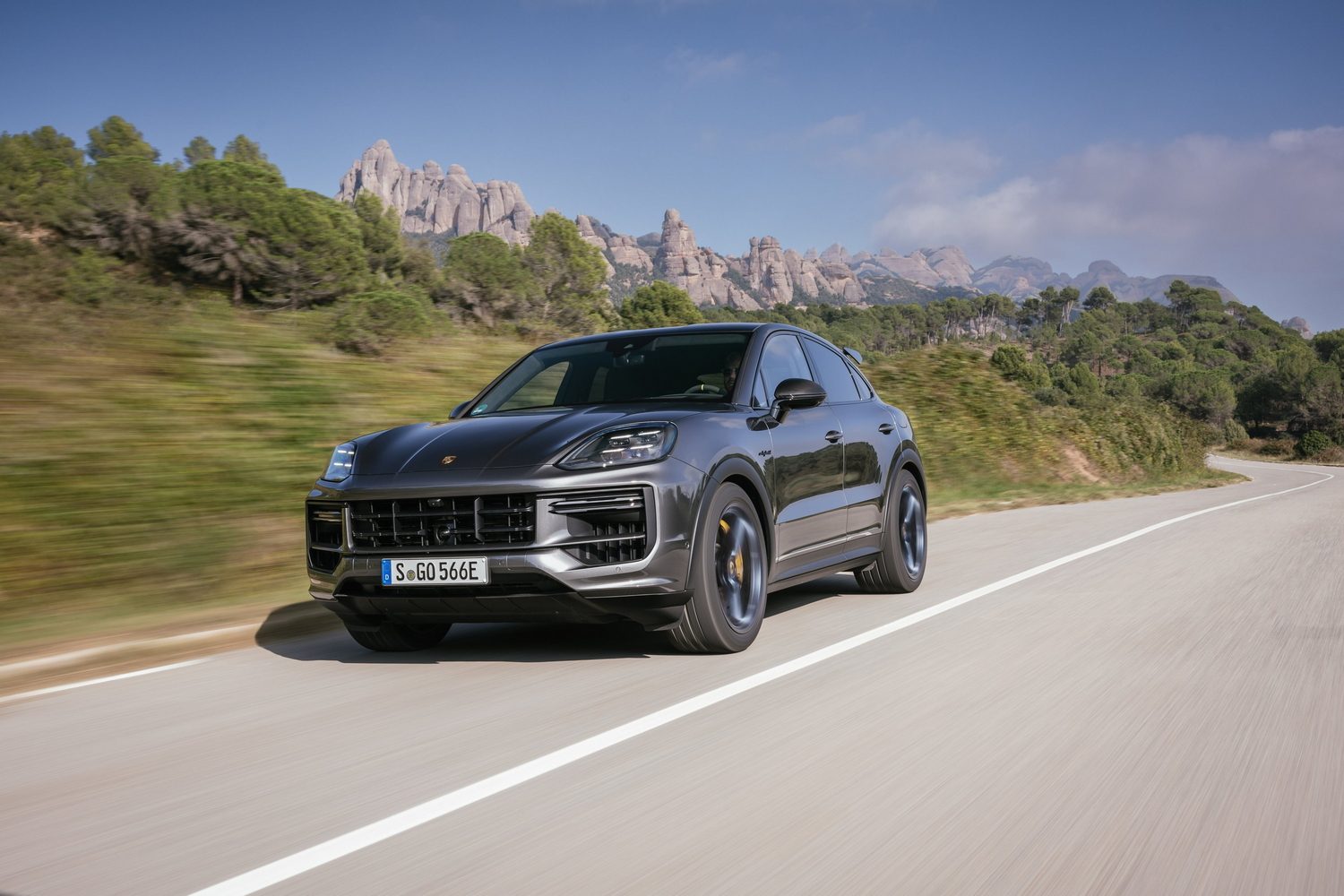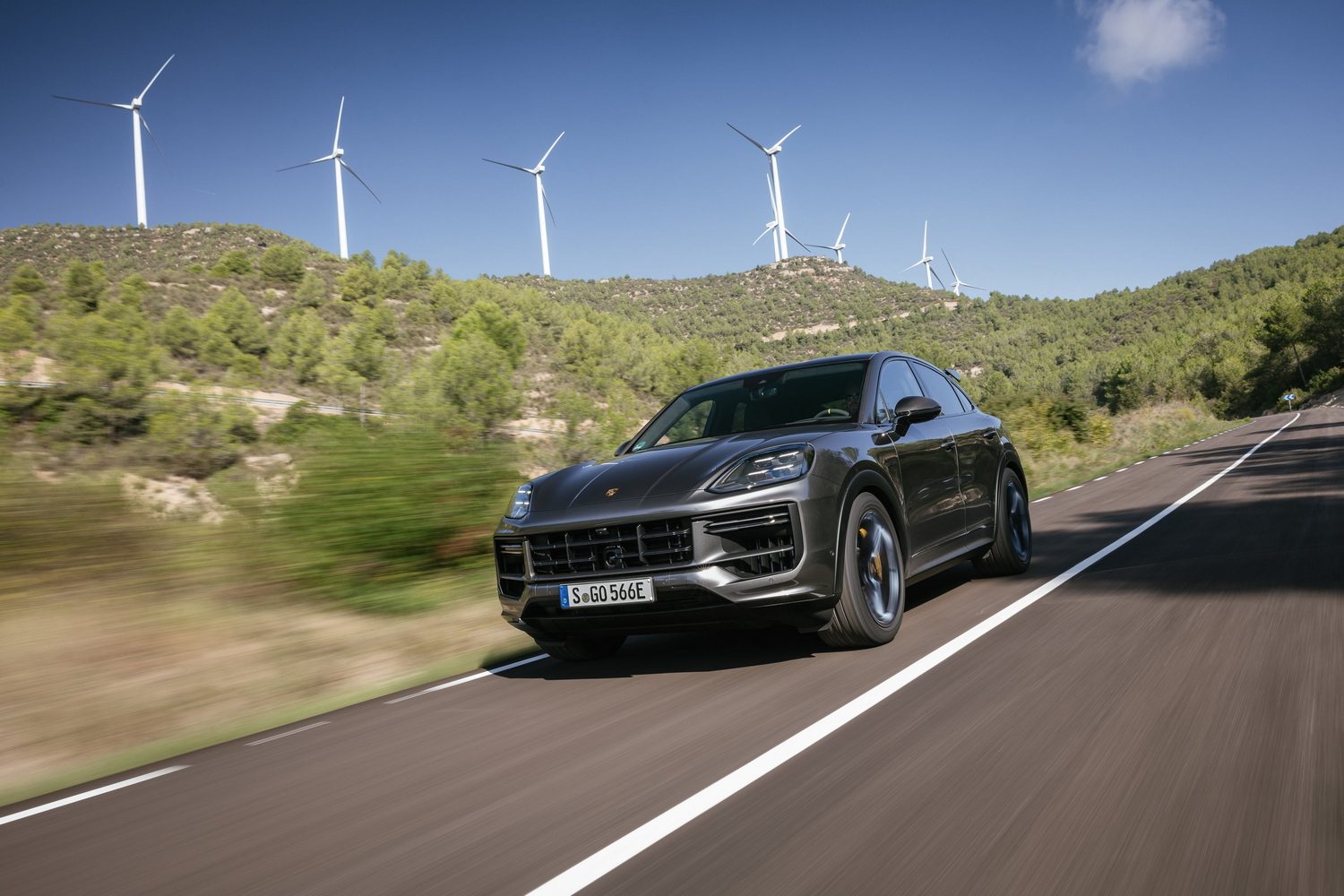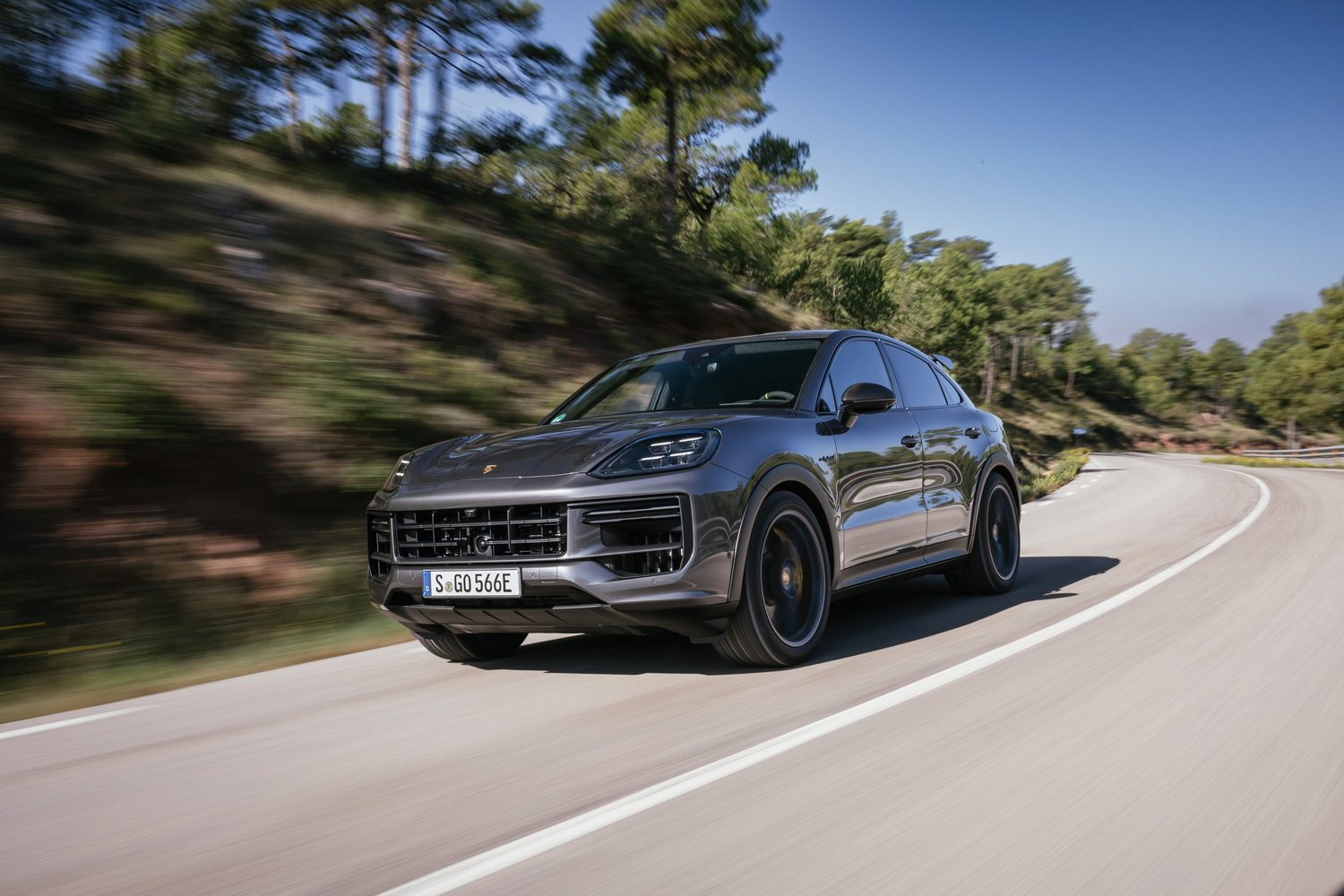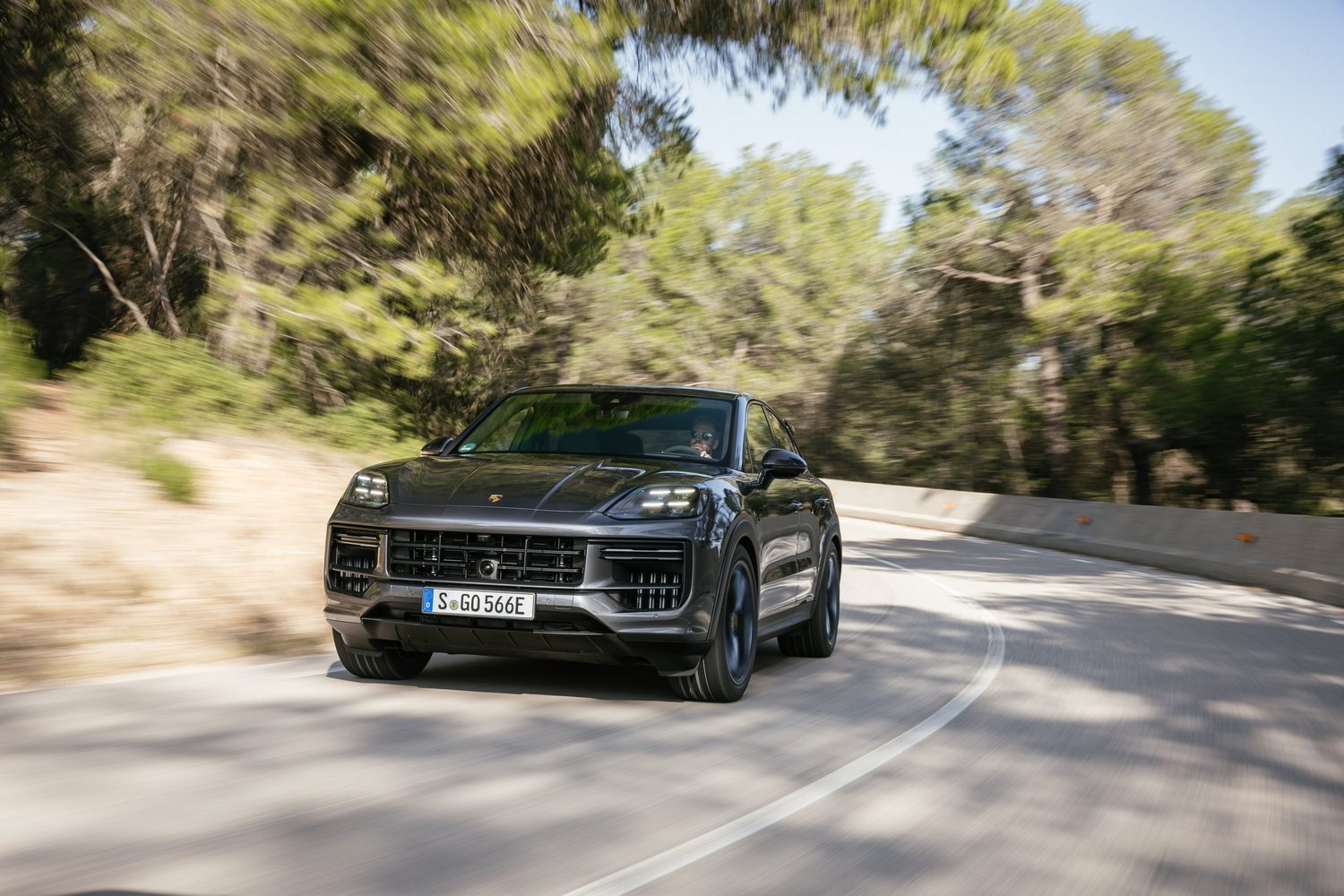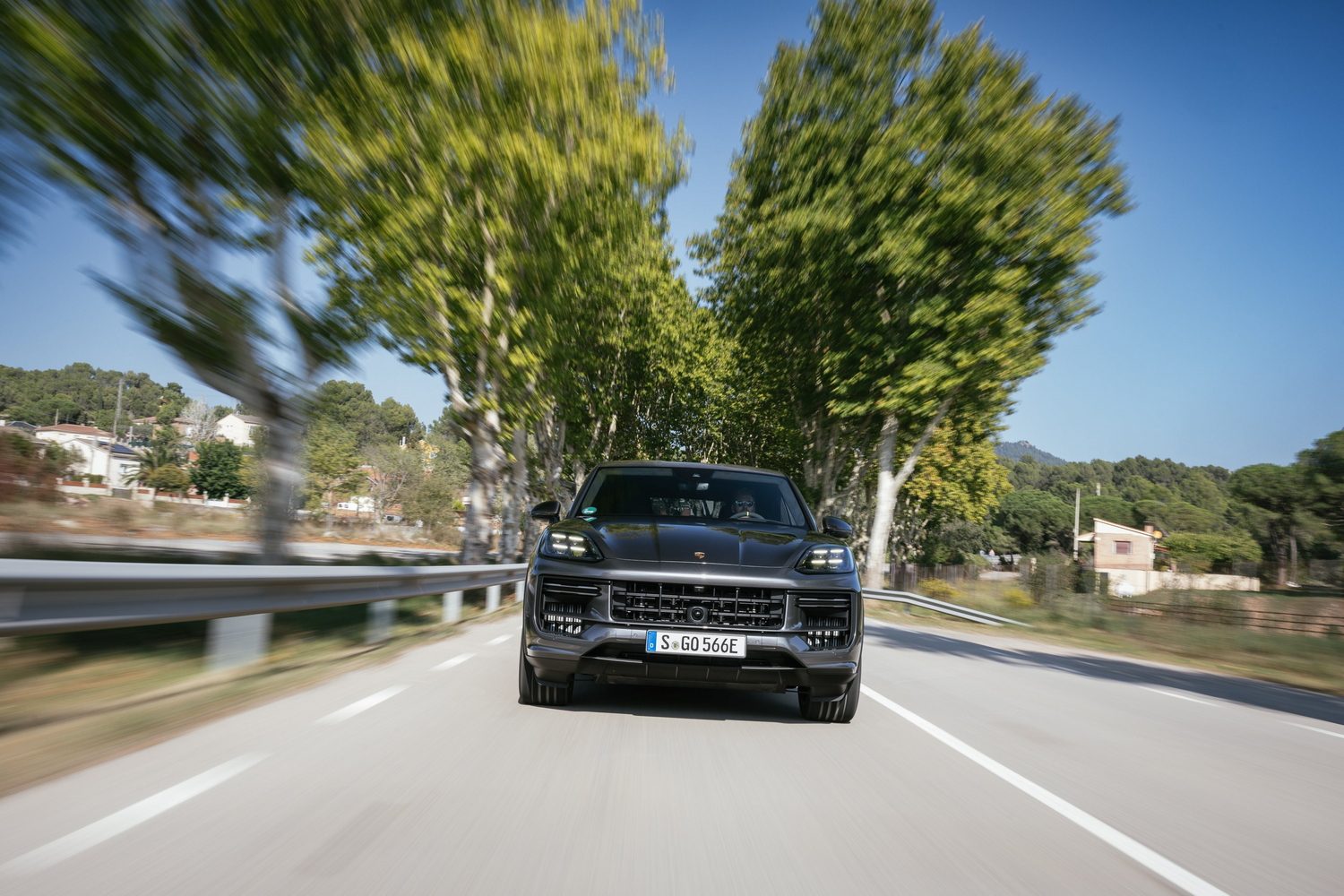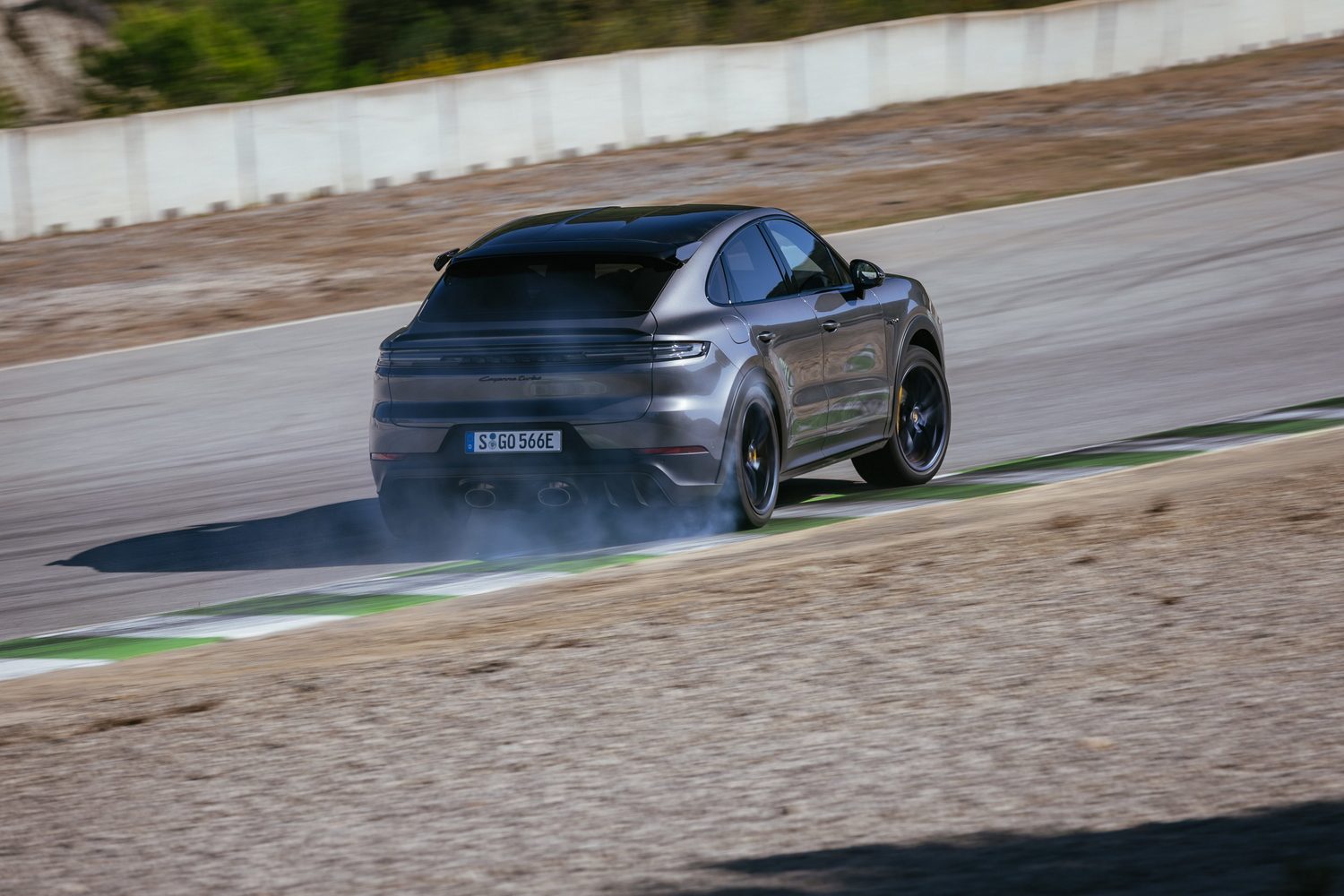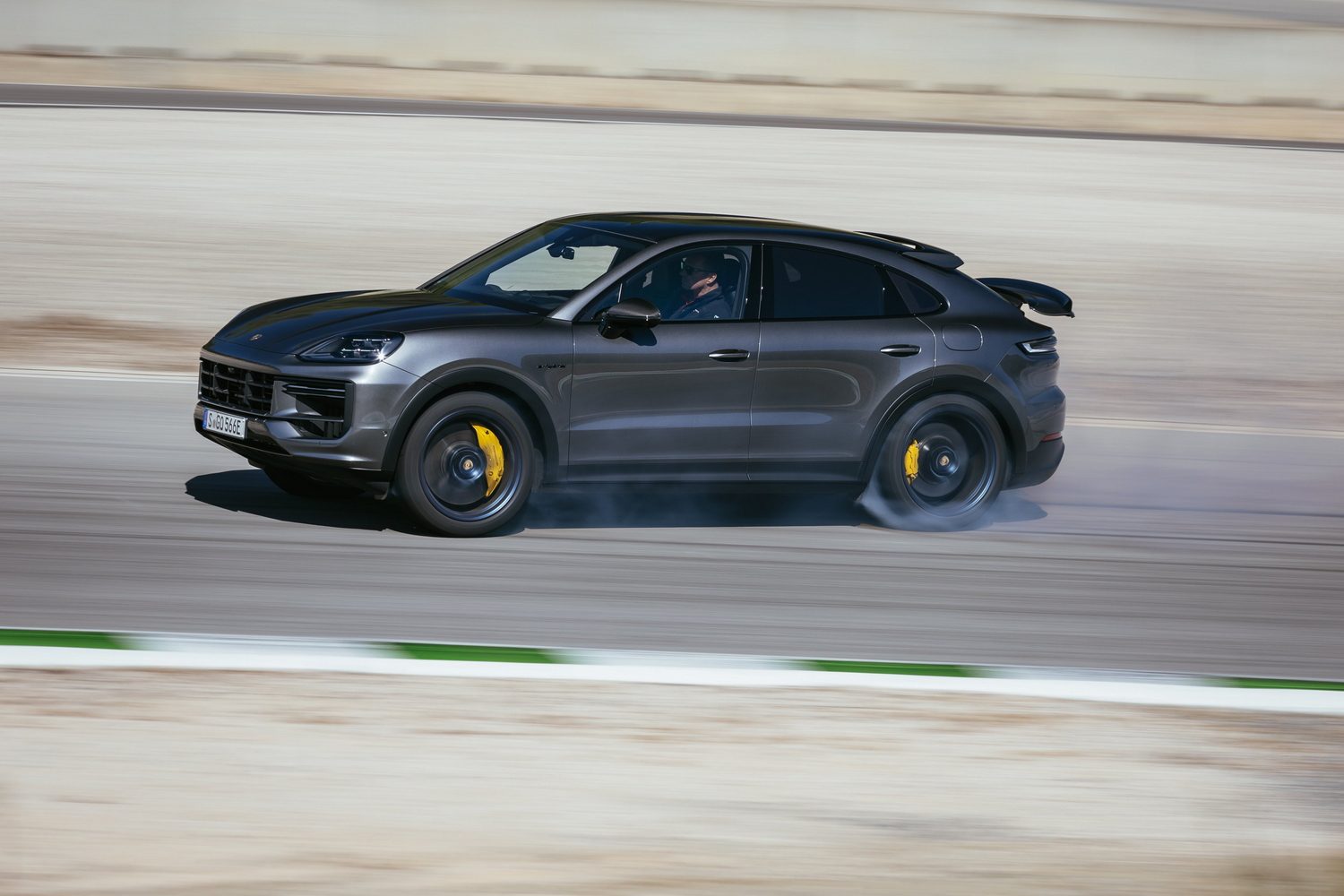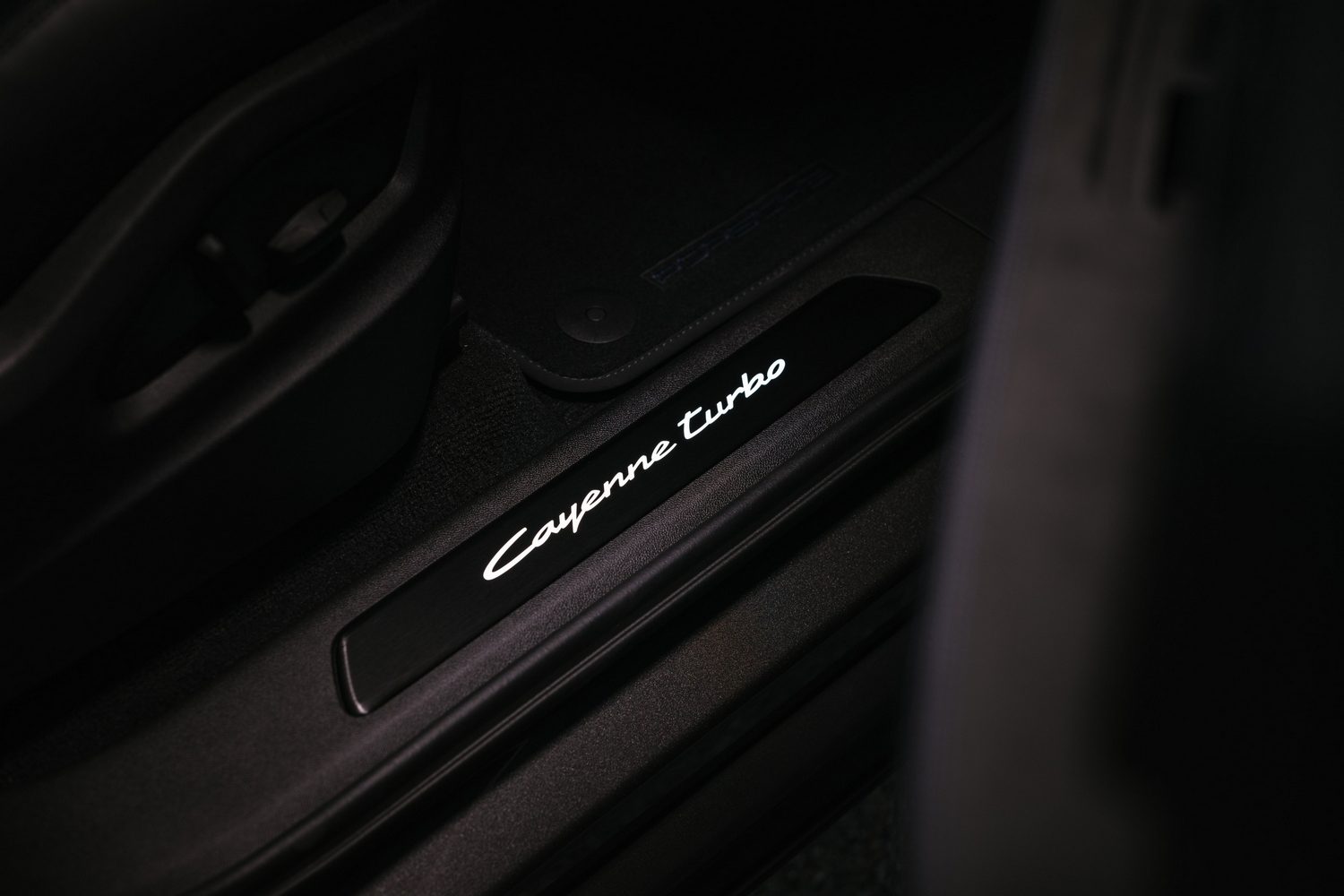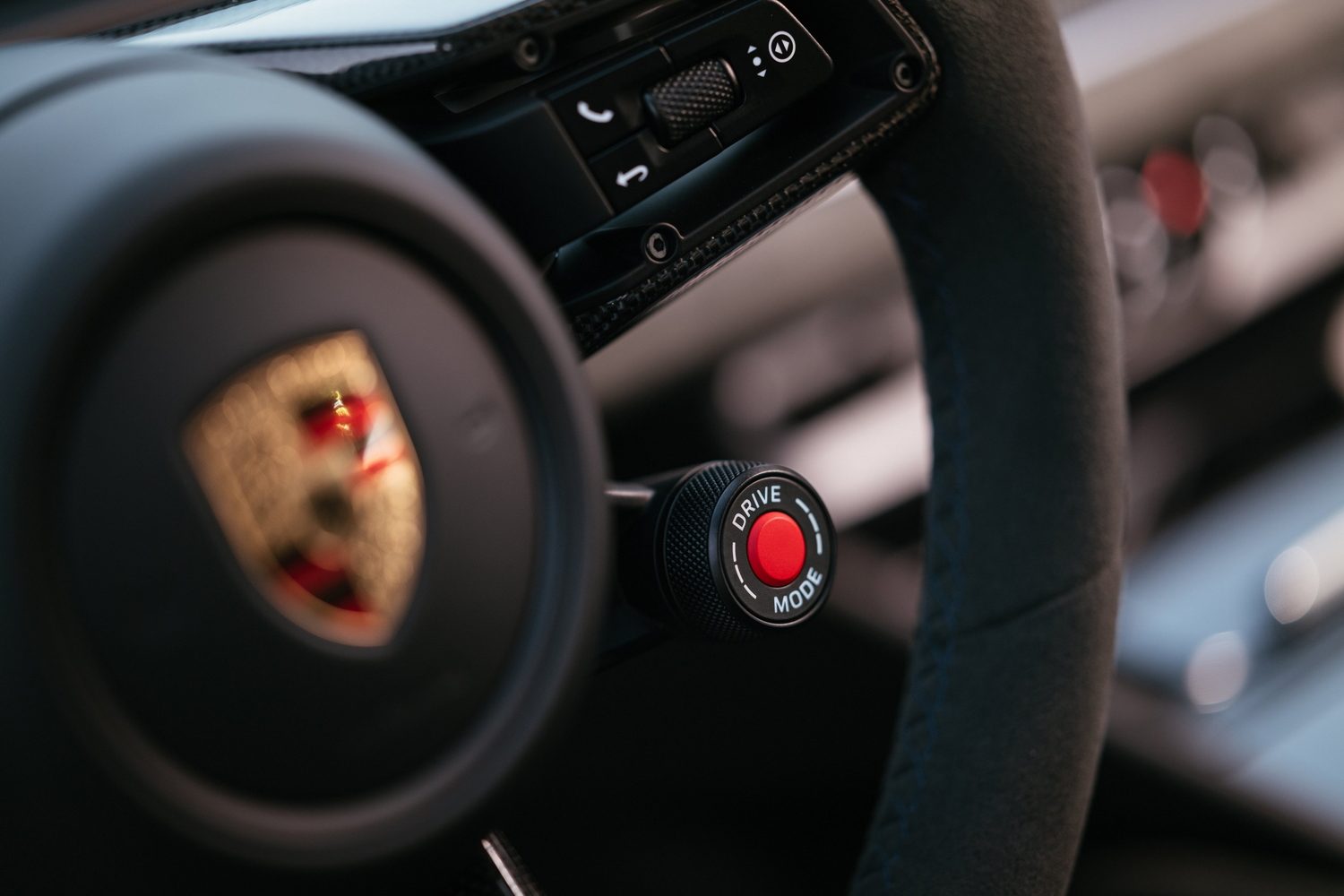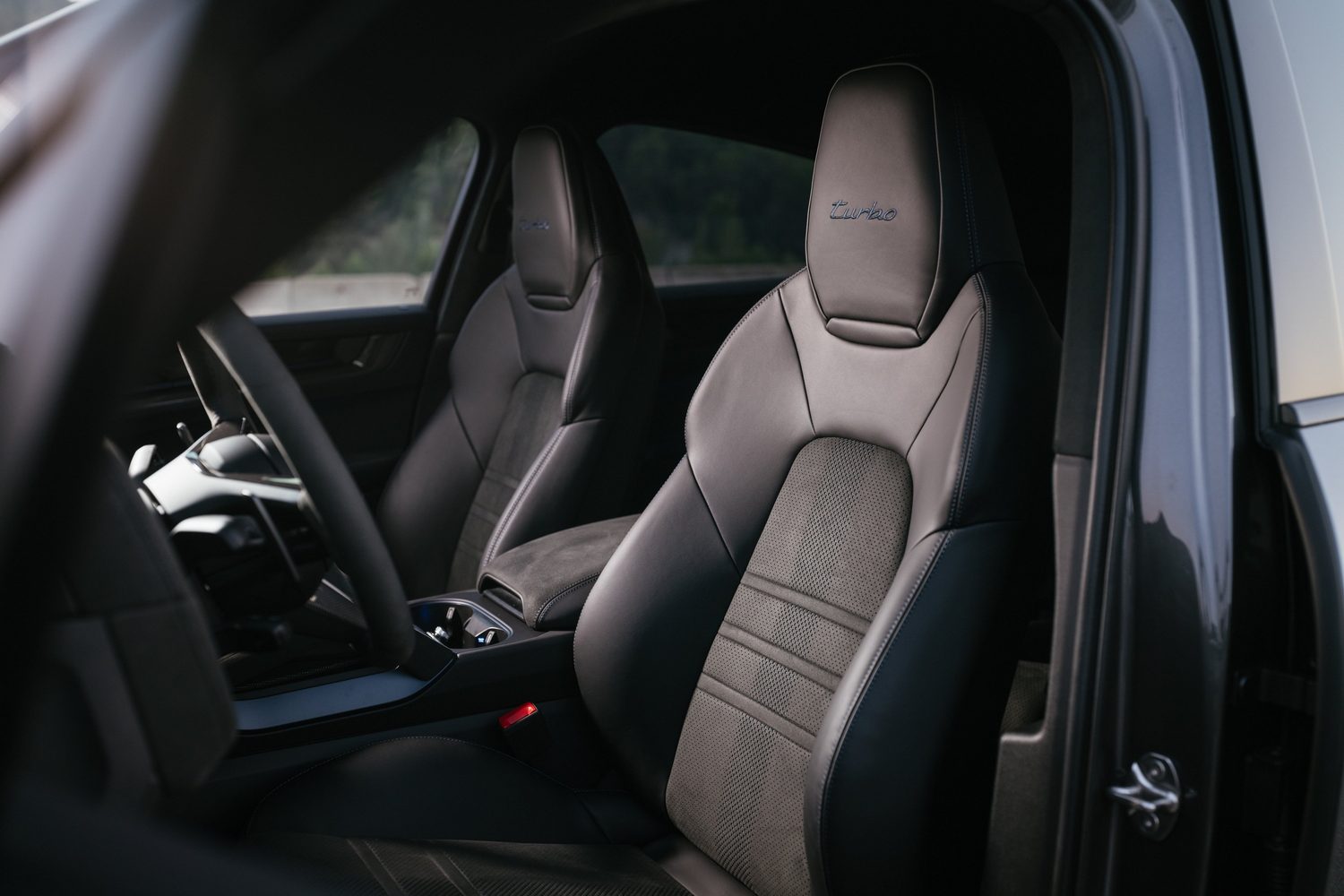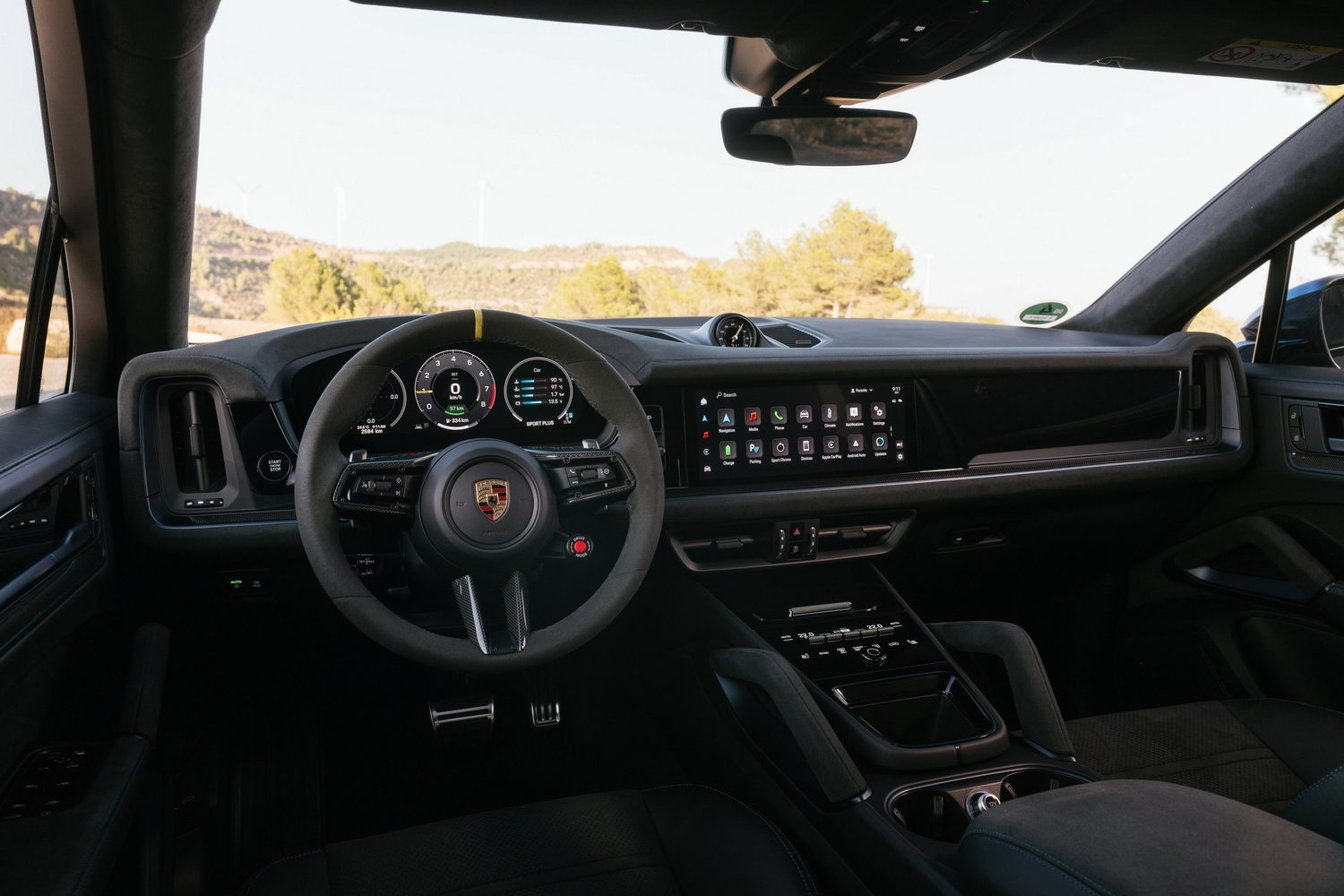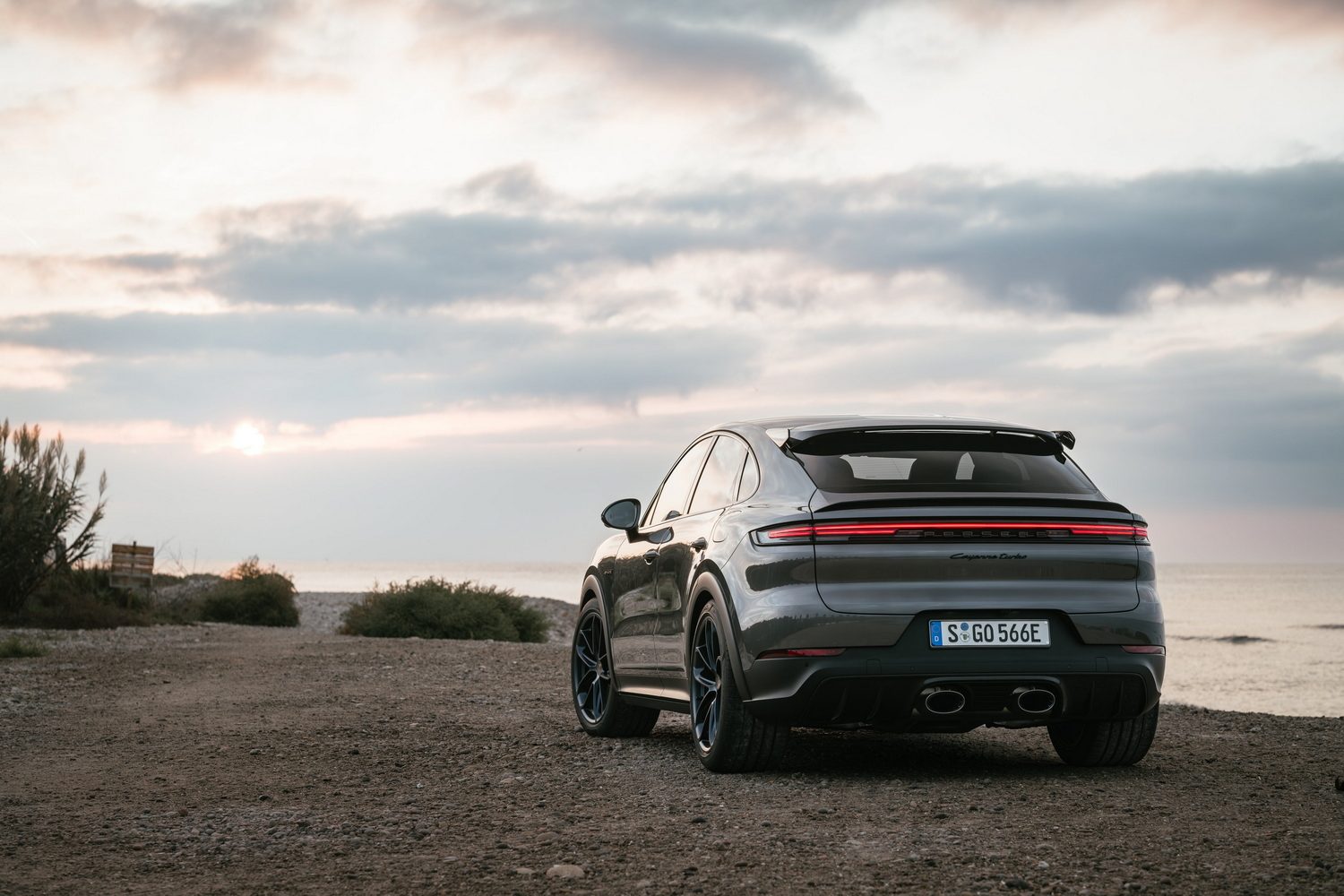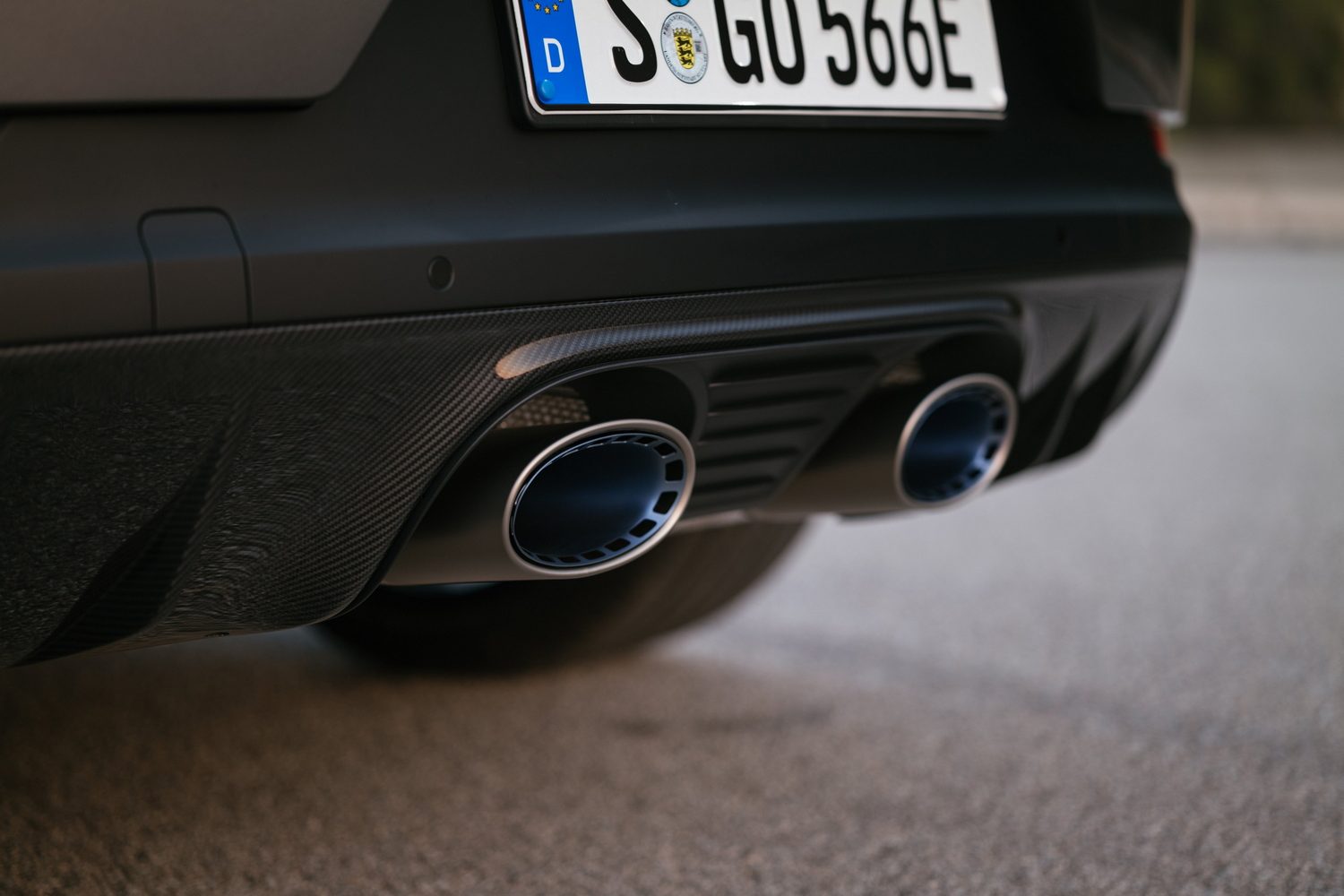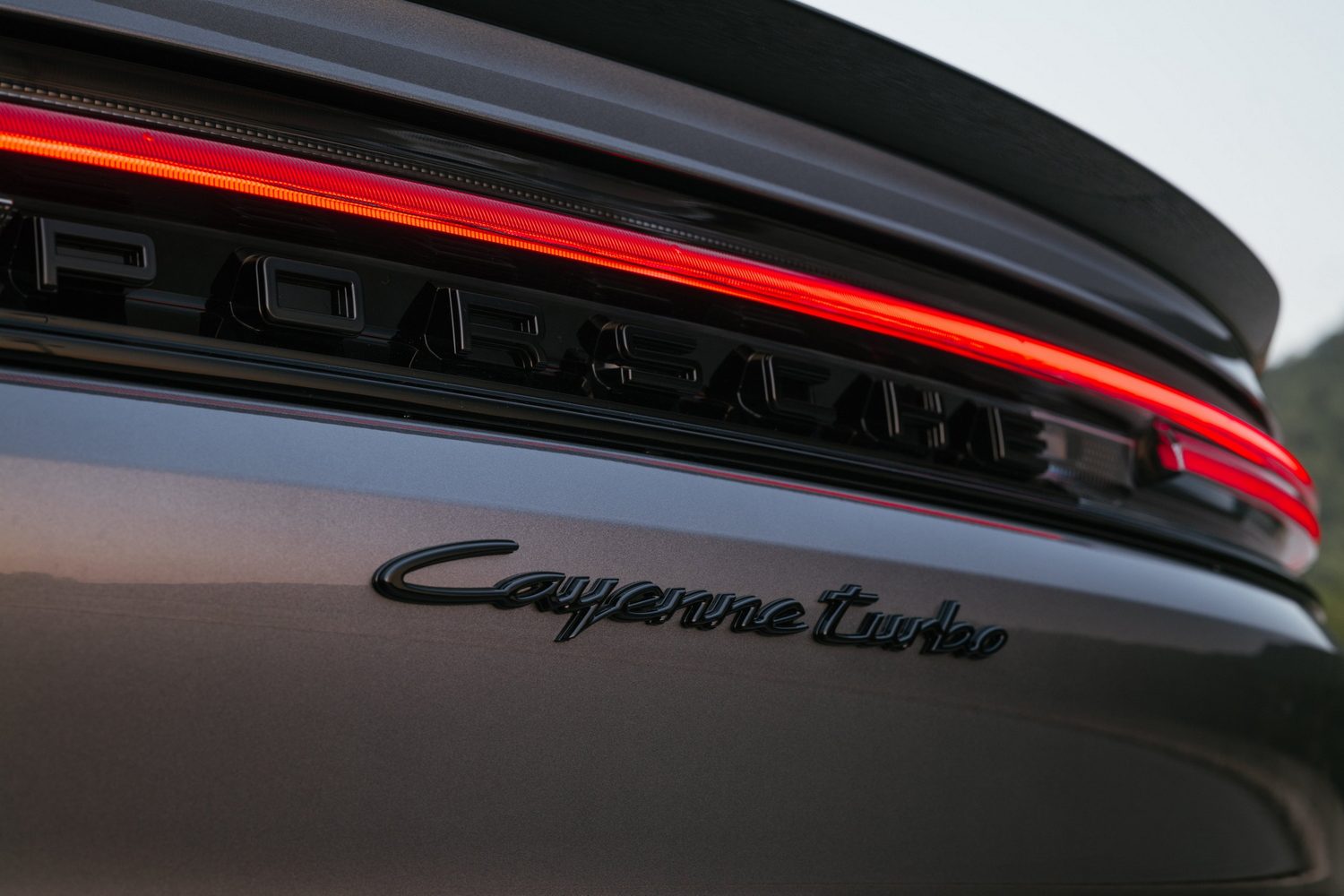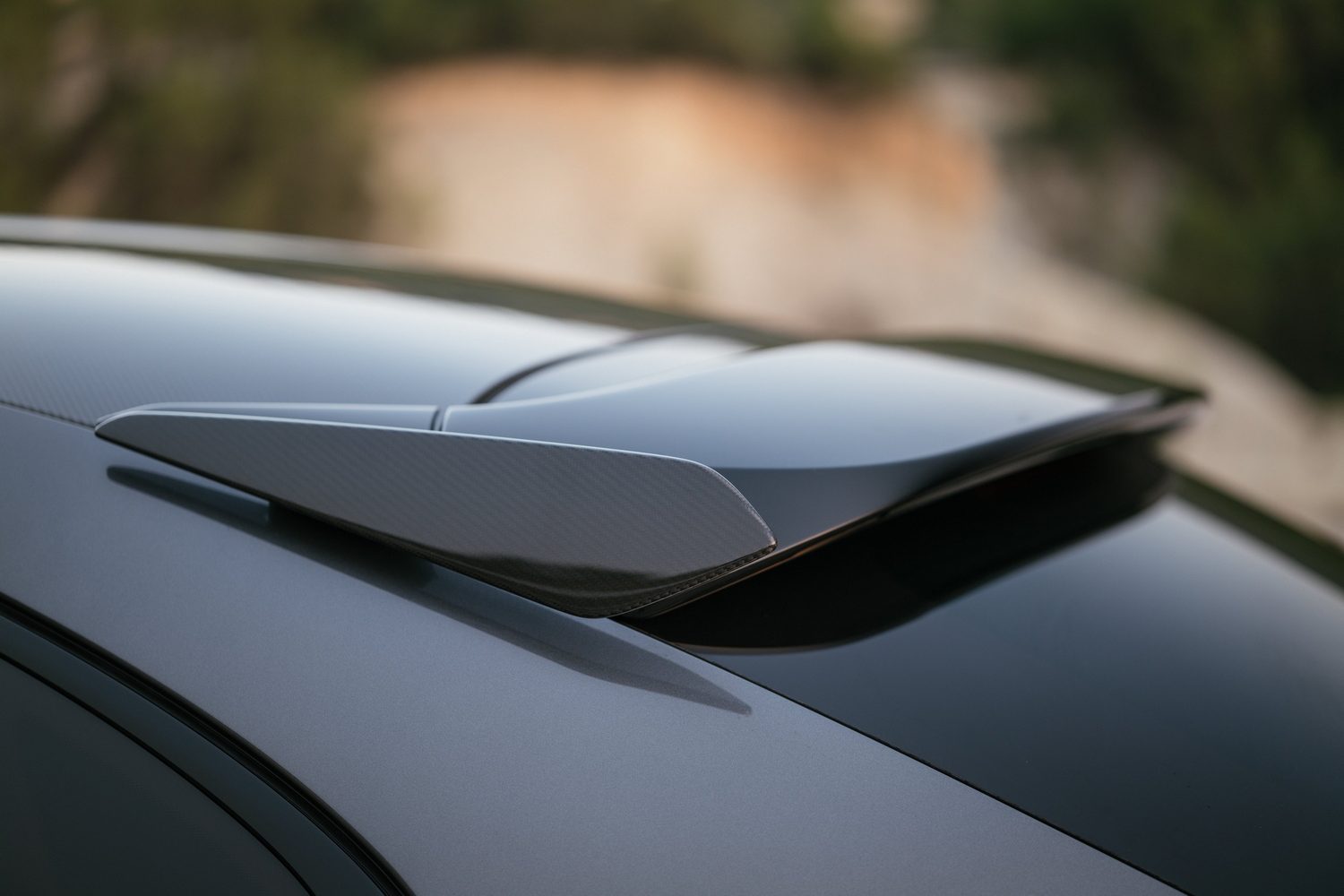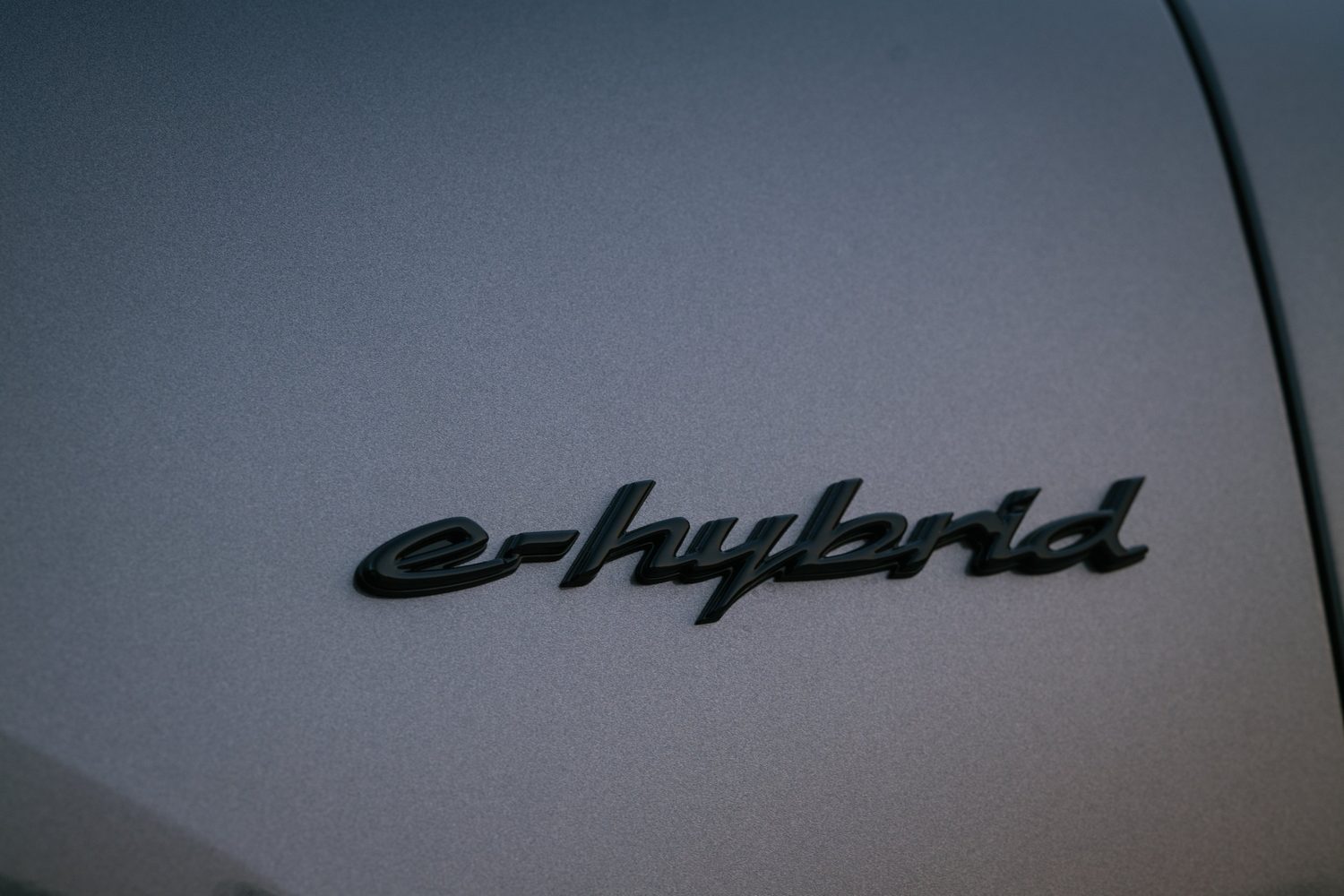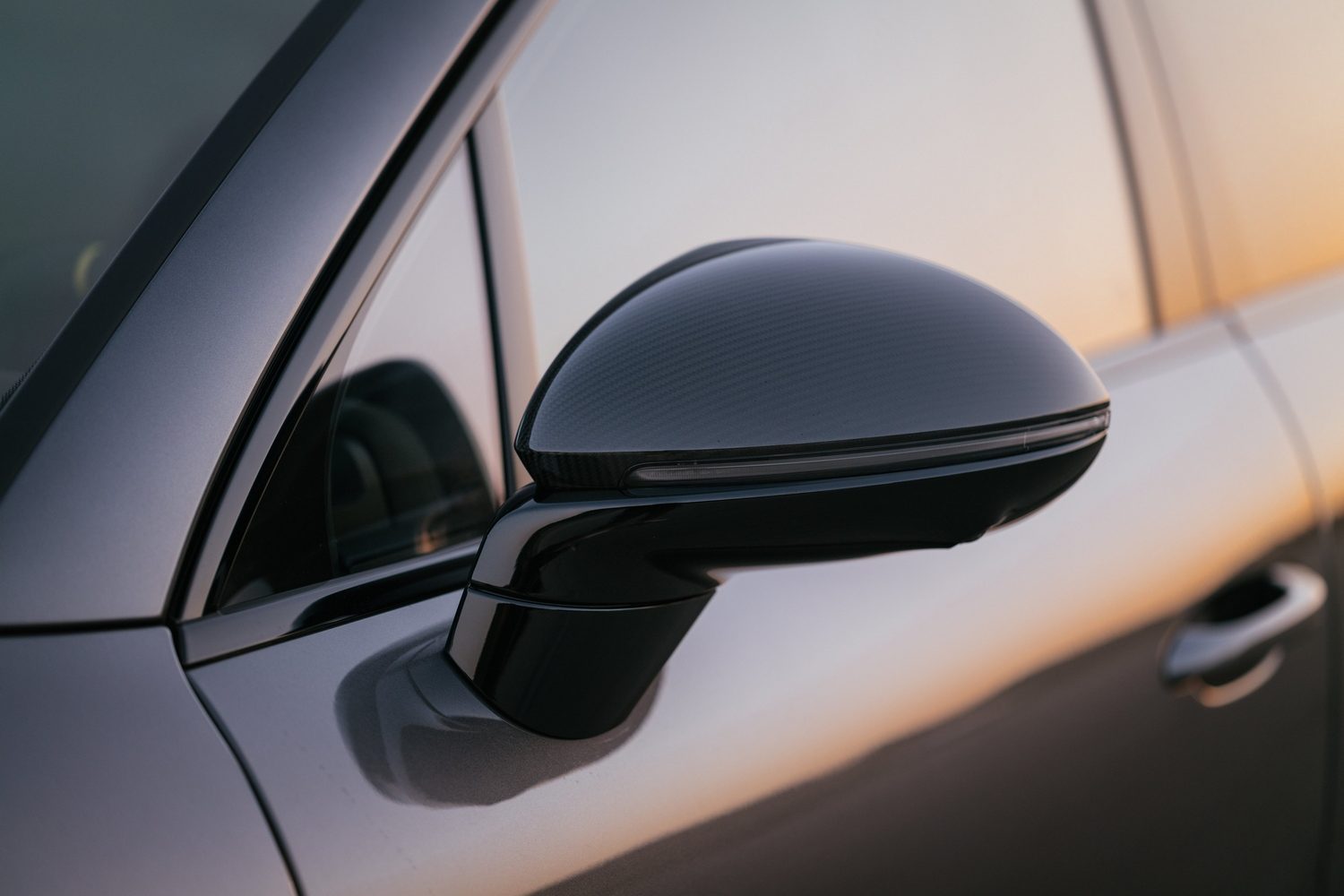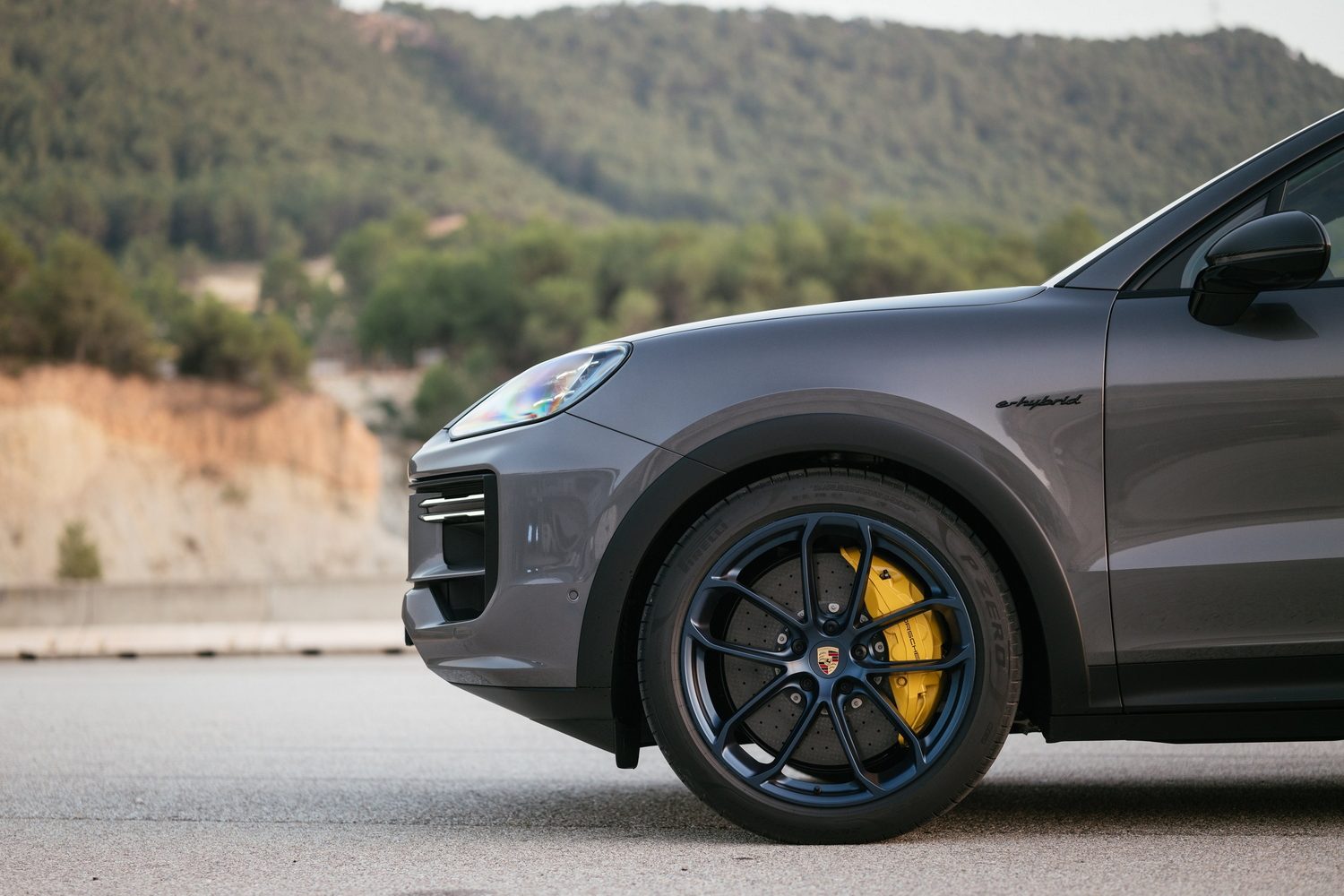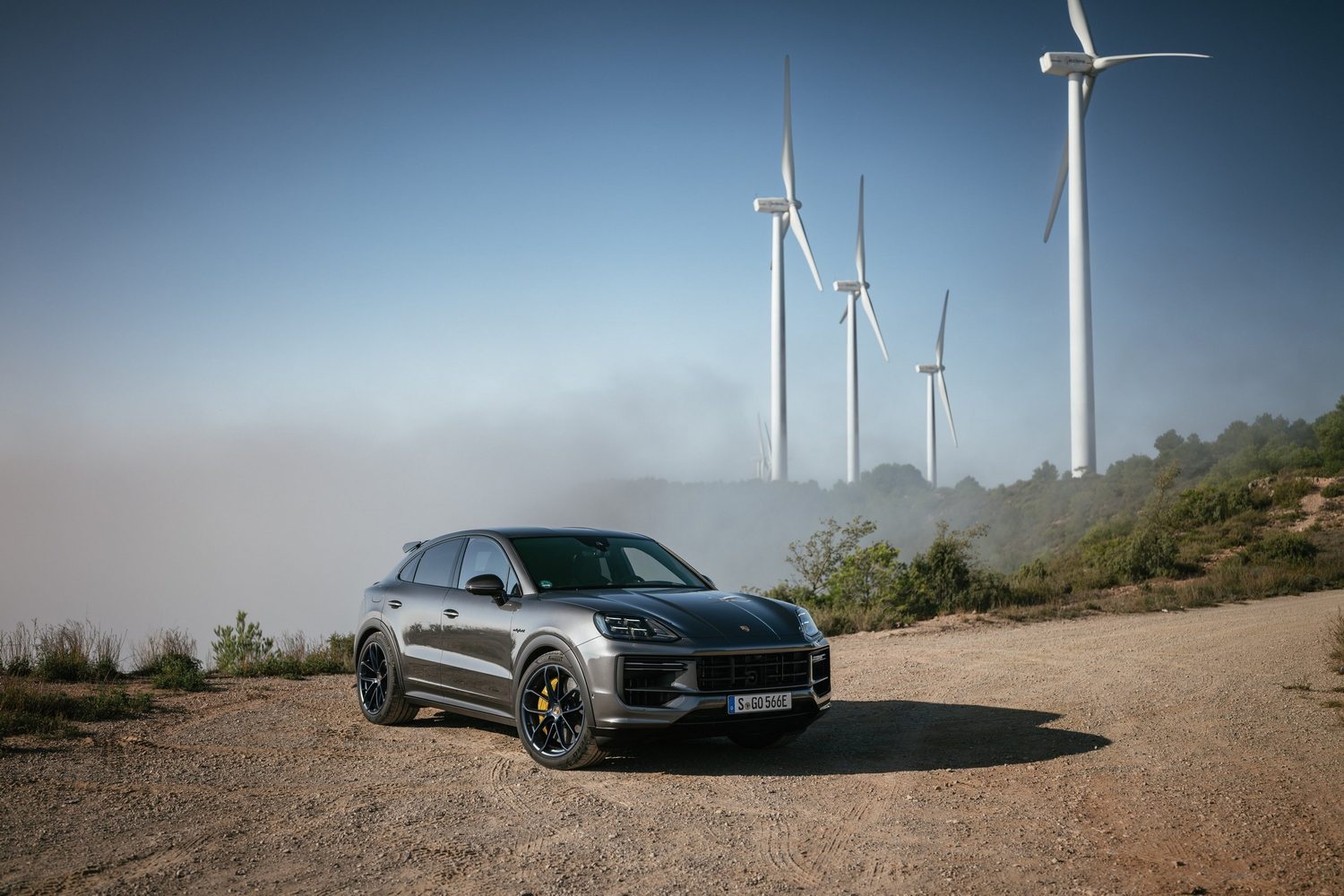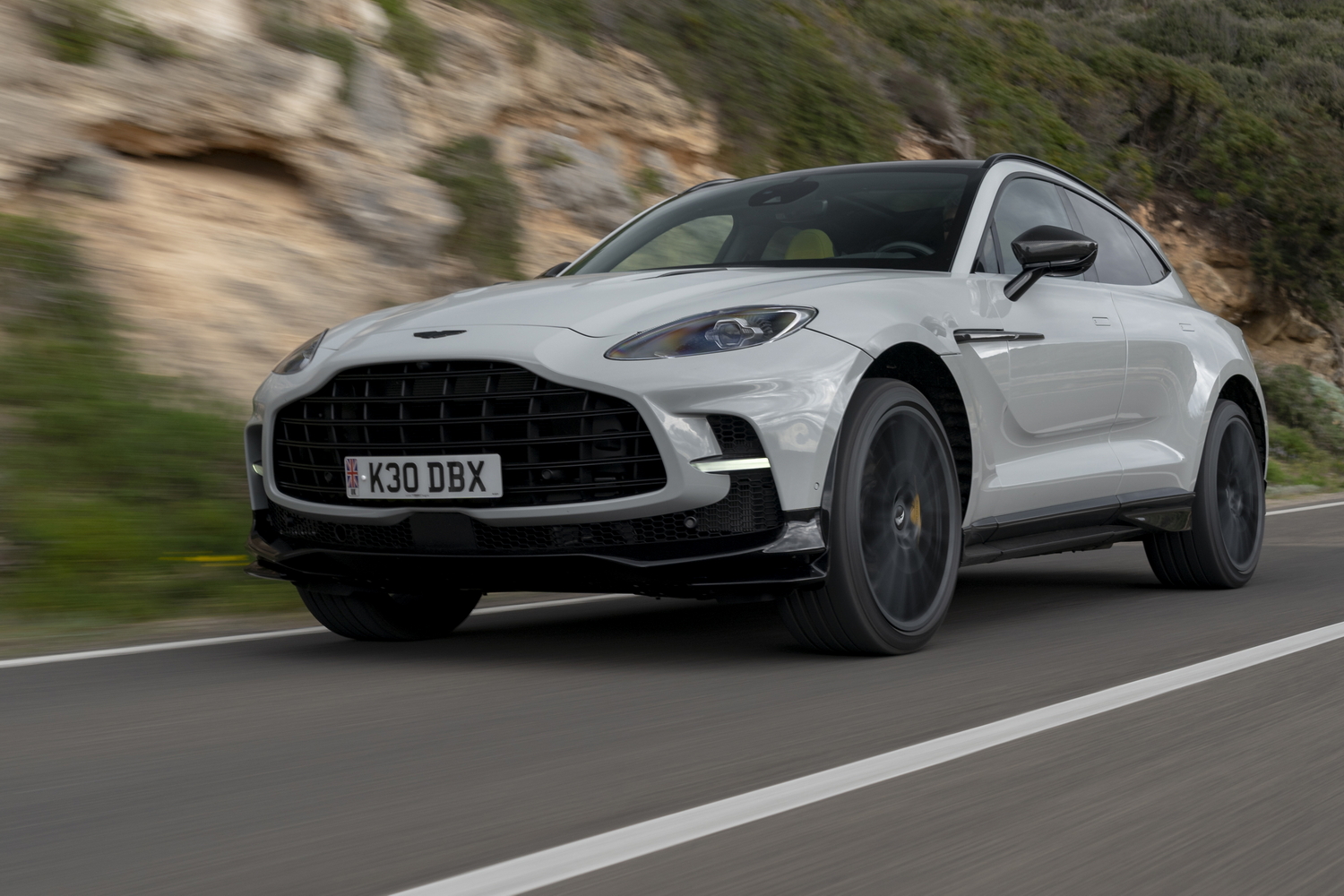Porsche's part-electric range of E-Hybrid plug-ins (PHEVs) grows as part of the third-generation Cayenne's facelifted line-up. When it comes to the SUV, fully three out of the five available variants are E-Hybrids, but over in the Cayenne Coupe range, that ratio increases to four-in-six, as there's a special model sitting at the top of the tree. Its full name, which is a bit clunky, is the Porsche Cayenne Turbo E-Hybrid Coupe with GT Package, but if you want to think of it as an electrified replacement for the truly mesmeric old Turbo GT, then that works. The question is, does the extra weight of the PHEV gear take the spice out of the ultimate Cayenne's pepperiness?
In the metal
You won't mistake the Cayenne Turbo E-Hybrid with GT Package for any other E-Hybrid model of the Porsche SUV family. For starters, you can't get this specification on the regular-shaped Cayenne - it's a Coupe or nothing. It takes all the updates that pertain to third-generation facelifted Cayennes, such as new lights and bumpers and wings and bonnet, and then uses the further-enhanced (wider wings, bigger alloys, quad exhausts) appearance of the Turbo E-Hybrid Coupe as its basis.
Then, the GT Package replaces the four tailpipes with two oval exits, centrally mounted in a serious-looking diffuser. The standard panoramic glass roof of a Cayenne Coupe is replaced with a carbon-fibre effort, while the rakish rear of the swoopy SUV sprouts a fixed spoiler at the top of the screen, to go with the automatically deploying one lower down on the boot lid. It also gains a design of 22-inch wheel from the old Turbo GT, plus you can put various fancy decals on the body to make the coupe-SUV look even sportier.
Inside, the major changes are the new 12.6-inch digital instrument cluster with no cowl, a feature seen in the Taycan family, along with the relocation of the gear selector onto the dashboard near the steering wheel. There's an option to have the 10.9-inch Porsche Passenger Display mounted in the dashboard, to the side of the main 12.3-inch Porsche Communication Management central touchscreen.
The GT Package brings in a 15mm-smaller-in-diameter GT Sport steering wheel compared to a Turbo E-Hybrid - complete with Race-Tex upholstery and a yellow 12 o'clock marker - and a full GT Package interior upgrade (including contrast stitching and much use of Race-Tex microfibre), plus sports seats with integrated head restraints. Oh, and the Sport Response button on the steering wheel gets painted red, too. Overall, it's a suitably classy and appealing ambience inside, heightened by the fact the driving position is sensational - you can seat yourself low down relative to the Cayenne's body, but you still get the higher vantage point out of the car afforded by it being an SUV.
Driving it
The problem with this Turbo E-Hybrid with GT Package is the very existence of the Cayenne Turbo GT before it. What we mean by that is that your expectations are, perhaps unfairly, raised by the use of those two little letters in the model badge, which - typically in Porsche mythology - means the most vaunted department in the company, certainly when it comes to handling and performance, has got involved in the mix. But whereas the Turbo GT was solely designed to be an out-and-out driver's SUV, with its emphasis on the best handling possible, the replacement Turbo E-Hybrid with GT Package is still, underneath it all, a PHEV.
We're not saying the newcomer is compromised, you understand. It doesn't add any extra power or torque, but it does reduce the Cayenne Coupe's mass by 100kg, chiefly by getting rid of the panoramic roof for the carbon item (side note: the reason most Cayenne Coupes weigh more than their equivalent SUV models is because of all that glass up top, so this one option-delete on the GT Package is desirable) and then enacting a whole host of other weight-saving measures, either small and nerdy, like switching the lead-acid 12-volt battery for a lithium-ion one, or fairly notable, such as fitting Porsche Ceramic Composite Brakes (PCCB) as standard.
This is all very noble, but when you're beginning with a PHEV, you're talking about reducing a lot of weight by a fraction when you're trimming 100kg off the top. So while the figure for the Turbo E-Hybrid with GT Package is an admirable (by the standards of other facelifted E-Hybrid models) 2,495kg, that's 275kg in excess of what the Turbo GT used to tip the scales at. In turn, it means that although its 739hp/950Nm versus the GT's 640hp/850Nm might look very favourable on paper, especially as the Turbo E-Hybrid with GT Package actually packs the better power-to-weight ratio by 8hp/tonne (it has 296hp-per-tonne, if you're wondering), this high-performance PHEV can never quite scale the same dynamic heights as the older Cayenne Coupe.
That's an unfair bar to set the GT Package, of course, as the Turbo GT was one of the all-time great vehicles - a thoroughly gobsmacking demonstration of how to make a giant, 2.2-tonne SUV feel like anything but. And there's also little doubt that, of all the new E-Hybrids added to the updated Cayenne's roster as part of the 2023 facelift, the Turbo E-Hybrid with GT Package is the best to drive by some distance. The reduction in weight compared to the Turbo E-Hybrid is notable, especially when driven back-to-back on track: the GT Package is much keener to get turned in, exhibits far less body roll in the corners and generally feels happier right at the maximum of its braking power too, so it's definitely the better package for circuit work.
But therein lies the rub. Are you really buying a 2.5-tonne, plug-in hybrid SUV as a track car? Almost certainly, the answer here is 'no'. And then the question further evolves into whether you need the extra dynamic capabilities of the Turbo E-Hybrid with GT Package, when - as we shall come to see in the next section of the review - it'll cost you a pretty penny to enjoy its charms. Because, on road, and operating more in the realms of motoring sanity when it comes to cornering speeds, you notice less of an edge to the GT Package. It's still deeply, deeply impressive that something this powerful and this focused and this heavy and this big can smoothly and oh-so-quietly move about town on its electric power alone, of course. And the ride quality, thanks to lighter alloys at the corners when compared to the Turbo E-Hybrid, is - if anything - even better thanks to the reduced unsprung mass of the GT Package.
But you get a lot of these delights from the 519hp S E-Hybrid if that's what you really want from a plug-in hybrid Porsche Cayenne, so it'll probably come down to the headline stats for a lot of buyers. The GT Package increases the top speed of the Turbo E-Hybrid by 10km/h, to a symbolic 305km/h maximum, while its lighter kerb weight trims the 0-100km/h time a tenth to 3.6 seconds. That is, we will not argue, obviously blistering for such a big machine, but again the Turbo GT rears its head: that SUV could run the same sprint in 3.3 seconds (although its top speed was a 'mere' 300km/h). That, alone, speaks volumes about the extra mass PHEV equipment brings to the party.
What you get for your money
This is not the best value-for-money of the updated Cayenne E-Hybrids, that's for sure. Available only as a Coupe, the Turbo E-Hybrid with GT Package is €195,349. That means you're paying an additional €26,927 when compared to the Turbo E-Hybrid Coupe for less stuff - sure, it's not the first time that a more focused car with less equipment has cost more than the base material, but here it seems a lot of money for the benefits the GT Package brings.
Obviously, the Turbo E-Hybrid comes with a lot of standard equipment to begin with, and the GT Package only adds another layer of desirability on top of that, courtesy of its exterior appearance and modifications, as well as a brilliant passenger compartment and the 100kg weight saving. Yet the fact it is pretty much €91,000 more expensive than a 'basic' 470hp Cayenne Coupe E-Hybrid is hard to ignore.
Summary
It's difficult to sum up the Porsche Cayenne Turbo E-Hybrid Coupe with GT Package, because you can approach it from one of two ways. You can either compare it to the current E-Hybrid range of Cayennes, where its invigorating dynamics, astonishing performance and eye-catching styling really do make it stand out from the crowd. Or you can hold it up to the now-defunct Turbo GT, a model killed off here in Europe by emissions regs, and lament the fact that while plug-in hybrid power has brought with it greater outputs and a wider operating bandwidth, it also comes at the cost of increased weight - so this isn't the best Cayenne for handling that has yet seen the light of day. It is, to cut things short, something of a contradiction in terms. However, for all that, the coruscating engineering brilliance of getting all this disparate technology to work in one package cannot be denied - so we, for one, are glad that the Cayenne Turbo E-Hybrid Coupe with GT Package exists.


